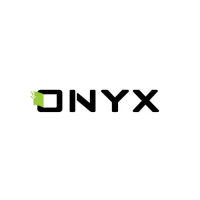
Do you have a question about the Onyx Poke5 BOOX and is the answer not in the manual?
| RAM | 2GB |
|---|---|
| Operating System | Android 11 |
| Display | 6" E Ink Carta |
| Resolution | 1448 x 1072 |
| Storage | 16GB |
| Connectivity | Bluetooth 5.0 |
| Supported Formats | EPUB, PDF, MOBI, TXT, DJVU, DOC, DOCX, PPT, PPTX, XLS, XLSX, HTML, RTF, FB2, CHM, ZIP, JPG, PNG, BMP |
| Frontlight | Adjustable warm and cold frontlight |
Details key physical components of the device, including power, microphone, ports, and card slot.
Precautions for handling the fragile E-ink screen to prevent damage.
Guidelines on using only approved accessories to ensure device safety and performance.
Instructions to keep the device away from magnets, static electricity, liquids, and extreme temperatures.
Warning against disassembling the device, especially regarding the battery replacement.
Recommended operating temperature range and caution against continuous use in extreme conditions.
Disclaimer regarding data loss due to abnormal operations or unauthorized repairs.
Guide on powering on the device and completing the initial setup process.
Description of the device's main screen layout including System Bar, Content Area, and Function Area.
How to access and use the Control Center and Notification Center for device management.
Function to optimize display effects for third-party apps using various refresh modes.
Guide on how to record the device screen, customize settings, and manage recordings.
Explains switching between Library and Directory modes for document organization.
How to connect and use cloud services for downloading and syncing documents.
Binding and unbinding cloud storage accounts and managing them.
Options to filter and sort eBooks by various criteria like reading time or title.
Customizing display options, scan paths, and reading statistics for the library.
Configuring reading progress and data synchronization across devices via Onyx Cloud.
Accessing book details, managing properties, and clearing data like passwords or cache.
Tracking and viewing personal reading habits like time spent and books finished.
Overview of reading menu options including OCR, Dictionary, Search, and document switching.
Customizing and using the floating toolbar for quick access to reading tools.
How to use the dictionary feature by long-pressing words for definitions.
Using Optical Character Recognition to extract text from images or scanned documents.
Details on the PDF reading menu options like Contents, Progress, Format, and Contrast.
Navigating documents using TOC, bookmarks, and managing annotations.
Monitoring reading progress, page numbers, and chapter navigation.
Options for zooming, cropping, and adjusting margins for better document viewing.
Adjusting text boldness, image sharpness, and background colors.
Customizing document layout, columns, and text flow for scanned or text-based documents.
Utilizing the V2 Engine for free-flow documents and customizing fonts.
Taking screenshots and managing screen refresh settings for optimal E-ink display.
Configuring translation engines and default dictionaries for word lookup.
Enabling right-to-left page-turning for specific document types like comics.
Accessing free publications and e-books from the internet.
Viewing specific book information and downloading full editions.
Viewing recent files and understanding storage organization by category.
Using external flash drives via Type-C OTG and power considerations.
Alert for insufficient storage space and recommended minimum free space.
Managing apps including uninstalling, optimizing, and settings like USB Debugging.
Guidance on optimizing third-party apps for better performance.
Configuring the navigation ball, its buttons, and display styles.
Using dictionaries for word lookup, pronunciation, and adding to vocabulary.
Adding custom dictionaries and managing them through settings.
How to connect BOOX with PC/mobile for sending and receiving files.
Viewing the history of sent and received files via BOOXDrop.
Pushing webpages to BOOX via push services for reading.
Adding and customizing RSS/OPDS feeds for content updates.
Using the calendar for notes and memos, setting them as screensavers.
Manage multiple ONYX accounts and associated login methods for synchronization.
View device details, firmware version, and perform a factory reset.
Setting system language, keyboard, and input methods.
Configure device time, power saving options, and network connections like Wi-Fi, Bluetooth, VPN.
Set a screen-lock password and manage other accounts for notes sync.
Adjust system font size and set a custom homepage.
Configure system navigation gestures and button functions.
Check for and install device firmware updates.
Access FAQ, submit feedback, and provide system information for support.